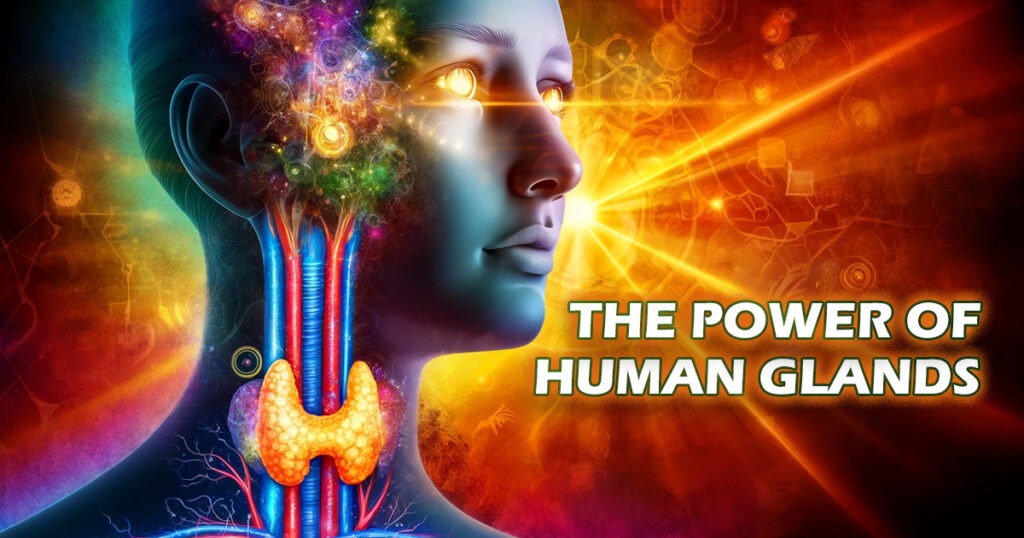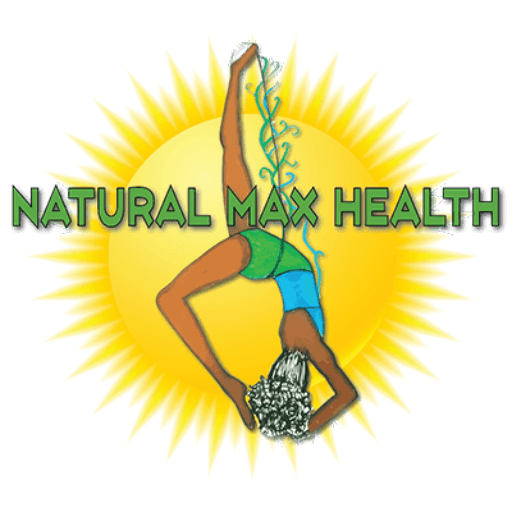The Power of Human Glands: How They Impact Your Health

Understanding how your body works is the key to unlocking a healthier, illness-free life. Dive with me into the fascinating and intricate world of human glands, where we unravel the secrets behind these tiny powerhouses that control everything from your mood to your metabolism.
This journey will enlighten you about how your body operates and empower you with the knowledge to prevent and combat various health issues. Let’s embark on this captivating exploration together!
What Are Glands?
According to the National Cancer Institute, a gland is an organ that produces one or more substances, such as hormones, digestive juices, sweat, tears, saliva, or milk. Glands come in two types: exocrine and endocrine. But before we dive into these, let’s familiarize ourselves with some key terms.
Key Terms to Know
Endochondral Ossification: This process replaces cartilage with bone during the development of the mammalian skeleton, one of the key pathways for bone production during fetal development.
Epiphyseal Bone Plate: Found between the epiphysis and the metaphysis of long bones, this plate is made of hyaline cartilage and contains the growth plate cartilage, which is the weakest part of a growing bone.
Hormones: Chemical messengers that travel through the bloodstream to organs and tissues, regulating how cells and organs function.
Hypothalamus: A region in the brain that acts as the body’s control center, coordinating many bodily functions, including homeostasis, endocrine control, sensory integration, body temperature regulation, digestion, blood pressure, heart rate, and the sleep-wake cycle.
Isthmus: A narrow strip of tissue connecting the two lobes of the thyroid gland.
Metabolism: The process by which your body transforms and manages energy from the food you eat.
Now that we have familiarized ourselves with some key terms let’s move forward with learning about glands.
Exocrine Glands: External Secreters
Exocrine glands secrete substances through ducts onto the body’s surface. Examples include salivary, mammary, sweat, and glands that produce tears, milk, and digestive juices.
Salivary Glands: These glands produce, modify, and secrete saliva into the oral cavity, aiding in swallowing and digestion and protecting teeth from cavity-causing bacteria. The major salivary glands include the parotid, submandibular, and sublingual glands. The minor salivary glands are located throughout the mouth, throat, and upper aerodigestive tract.
Mammary Glands: Specialized for milk production, these glands are present in both males and females but are well-developed only in females.
Sweat Glands: Located in the deeper layer of the skin, these glands produce sweat, helping regulate body temperature and remove waste. They are most common on the forehead, armpits, palms, and soles of the feet.
Endocrine Glands: Internal Secreters
Endocrine glands, such as the pituitary, thyroid, and adrenal glands, secrete hormones directly into the bloodstream.
Pituitary Gland (also known as the hypophysis): Often called the master gland, the pituitary gland controls other endocrine glands and releases hormones that regulate vital body functions. The gland is divided into the anterior and posterior lobes. The anterior lobe produces hormones such as growth hormone, thyroid-stimulating hormone, adrenocorticotropic hormone, follicle-stimulating hormone, luteinizing hormone, and prolactin. The posterior lobe stores and secretes antidiuretic hormone and oxytocin.
The pituitary gland is connected to the hypothalamus by a stalk of blood vessels, and nerves called the pituitary stalk. Through the stalk, the hypothalamus communicates with the pituitary gland and tells it to release hormones. The pituitary gland is divided into two main lobes: the anterior or front lobe and the posterior or back lobe.
The anterior frontal lobe or anterior pituitary is located at the brain’s base, behind the nose’s bridge, directly below the hypothalamus. It makes up 80% of the pituitary gland and releases over six different hormones, which regulate various cellular processes, including:
- Growth
- Metabolism
- Reproduction
- Lactation
- Response to stress or trauma
The posterior or back lobe stores and secretes antidiuretic and oxytocin hormones. The antidiuretic hormone helps regulate the water balance in your body by controlling the amount of water your kidneys reabsorb while filtering waste out of your body. The oxytocin hormone, also known as the “love hormone” or “cuddle chemical,” plays a significant role in various behaviors such as sexual arousal, romantic attachment, mother-infant bonding, trust, and recognition. It has many other functions, including stimulating uterine contraction during labor and childbirth and breast tissue contractions to help lactation after birth. It can also help control bleeding after delivery. In addition, oxytocin is linked to higher levels of social interaction, well-being, and anti-stress effects. Studies have shown that the release of oxytocin into certain parts of the brain can reduce stress and anxiety levels.
Thyroid Gland: This small butterfly-shaped gland in the neck, nestled in front of the trachea and below the larynx, produces hormones that regulate the body’s metabolism. The thyroid gland has two lobes on either side of the trachea connected by a thin piece of tissue called the isthmus. The gland constantly releases hormones into the bloodstream to help regulate many body functions, including growth, energy expenditure, and chemical reactions. The three hormones produced by the thyroid are thyroxine (T4), triiodothyronine (T3), and calcitonin.
- Thyroxine (T4) is secreted directly into the bloodstream by the thyroid. Once in the bloodstream, it travels to organs like the liver and kidneys, where it is converted to its active form, triiodothyronine. Thyroxine is crucial in heart and digestive function, metabolism, brain development, bone health, and muscle control. It affects almost all body systems, which means thyroxine levels are vital for health. I will discuss thyroxine levels in greater detail in my next article.
- Triiodothyronine (T3) is responsible for the development of fetal growth centers, linear bone growth, endochondral ossification, and epiphyseal bone center maturation following birth. T3 also simulates adult bone remodeling and the degradation of mucopolysaccharides and fibronectin in extracellular connective tissue.
- Calcitonin helps regulate calcium levels in the blood by lowering calcium levels when they are too high. It also inhibits osteoclasts, cells that break down bone and release calcium into the bloodstream.
Adrenal Glands (also known as the suprarenal glands): Located on top of each kidney, these glands consist of the cortex and medulla.
Cortex– the outer part of the gland that produces hormones that affect blood pressure, metabolism, and how the body uses fats, carbohydrates, and proteins. The adrenal cortex produces several steroid hormones, including:
- Glucocorticoids regulate glucose metabolism and the immune system. Cortisol is the primary stress hormone. It increases blood sugar, helps the brain use glucose, and makes substances available to repair tissue. Cortisol also slows down nonessential or harmful functions during a fight-or-flight response.
- Mineralocorticoids hormone regulate water and mineral balance. Aldosterone is mineralocorticoid.
- Androgens hormones include testosterone, dihydrotestosterone, and androstenedione. Testosterone is the primary sex hormone in males that helps develop secondary sex characteristics. Androstenedione is an androgenic hormone produced in women by the adrenal cortex and ovaries. Its levels vary during the menstrual cycle and help monitor ovarian function.
- Progestins are produced by the ovaries and placenta during pregnancy. Progesterone is often called the hormone of pregnancy, but it also benefits women’s health in other ways.
Medulla– the inner part of the gland that produces hormones catecholamines, including adrenaline and noradrenaline, also known as “stress hormones.” Adrenaline and noradrenaline have similar functions; they act as hormones and neurotransmitters, chemical messengers in the nervous system, to help control blood pressure, heart rate, sweating, and other activities. They also initiate the body’s flight or fight response.
Adrenaline (also known as epinephrine) helps the body to respond to dangerous situations by causing temporary changes in the body, such as:
- Increasing heart rate and blood pressure
- Making breathing more efficient by relaxing airway muscles
- Raising blood sugar levels to provide energy
- It causes the brain to be more alert
- Reduces pain so you can keep fighting or running, even if injured
- Dilates the pupils for better focus
- It makes the body sweat more to prevent overheating
Noradrenaline (also known as norepinephrine) is a neurotransmitter and hormone that plays many roles in the body, such as:
- It regulates arousal, attention, cognitive function, and stress reactions. It also helps build cognitive reserves, which can help the brain become more resilient against disease. Noradrenaline can also modulate the activity of brain regions associated with anxiety.
- In response to stress, it increases alertness and arousal, constricts blood vessels, and breaks down fat to increase blood sugar levels, providing a burst of energy.
- It increases tear production and dilates pupils in response to light and emotions.
- It triggers the release of renin, which regulates salt and water balance.
- It triggers the release of glucagon, which helps the liver produce more glucose.
- It stimulates the spleen, thymus, and lymph nodes to help the immune system fight infection.
Heterocrine Glands: Dual Function Glands
Heterocrine glands function as both exocrine and endocrine glands. The endocrine regions pour secretion into the circulatory system, and the exocrine region drains it through ducts. Examples of heterocrine glands are the pancreas, testes, and ovary.
Pancreas: This gland secretes insulin (endocrine function) to maintain blood glucose levels and pancreatic juice (exocrine function) to aid digestion.
Testes: They produce androgens like testosterone (endocrine function) and sperm (exocrine function).
Ovaries: These produce sex hormones like estrogen (endocrine function) and release eggs (exocrine function).
In Closing
This journey through the world of glands highlights their critical roles in maintaining health. In upcoming articles, I’ll delve into gland disorders and hormonal imbalances. As I always say, understanding how your body functions is essential to learning how to reverse or prevent illness.
If you found this article helpful, please share it with someone who might benefit from it. Until next time, take care of yourself, and happy healing!
Related Links
Food Allergies & Intolerances: What Triggers Your Reactions?
